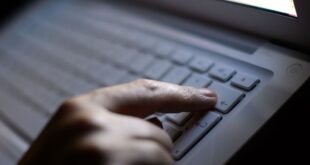A Royal Navy drone squadron has marked its fifth anniversary with the addition of a new craft. The 700X Naval Air Squadron – which marks the milestone next month – is preparing to introduce the Peregrine helicopter into service, the latest addition to the specialist unit’s growing fleet of crewless systems.
The squadron was established after the First Sea Lord at the time – today’s Chief of the General Staff, Admiral Sir Tony Radakin – outlined his ambition for the Navy to harness drone technology, operating them alongside existing helicopters and stealth jets. Today, the Culdrose-based squadron has mastered the Puma reconnaissance drone, regularly deploying ‘flights’ to operate from Royal Navy warships, and has trialled its successor at the international drone exercise, REPMUS, in Portugal.
There are now nine qualified Puma teams – six of them dedicated to supporting Royal Marines of 40 and 45 Commando. Small, making it hard to sight from the ground, with a range of more than 30 miles and endurance of two hours, Puma has proved ideal for reconnaissance and intelligence-gathering over land and sea. It’s been used by HMS Trent and boarding teams both off Africa and on disaster-relief and anti-drugs operations in the Caribbean, while HMS Spey has used Puma to identify vessels working alongside the Republic of Korea Navy and commandos flew it on reconnaissance/gunnery spotting sorties during the large-scale Predators Run exercise Australia over the summer.
Closer to home, since December, 700X has been operating Banshee jet-powered drones from Predannack Airfield, near Culdrose. Operating at speeds in excess of 400mph and with a range of more than 60 miles, the Banshee has allowed the squadron to build up a core of expertise in these powerful air systems.
“We have come a long way in the past five years, which is not surprising given the fast-paced world of autonomous and remotely-piloted air systems,” said 700X NAS’ Commanding Officer Lieutenant Commander Marcus Pennant.
(Image: Royal Navy)
“As a squadron we are continually researching new systems and assessing how they can be of use to the Royal Navy. At the heart of this endeavour are the men and women who rotate through the squadron – from aircrew and engineers to Royal Marine commandos.”
He added: “Our air systems have performed admirably and have proved the concept of routine drone operations. However, this is just the start and I have no doubt the use of remotely-piloted and autonomous systems will continue to grow with new applications, augmenting crewed aviation with some of their key roles.”

(Image: Royal Navy)
The current challenge for the squadron is Peregrine, a helicopter drone described by the team as ‘game-changing’ technology. Fitted with powerful Wescam cameras and Thales radars, the system has the potential to vastly increase the ability of warships to identify targets and spot incoming danger.
“Much larger than Puma – with much more range and capability as a result – it is being trialled in the Middle East aboard frigate HMS Lancaster, which has been specially adapted to accommodate the new system.

(Image: Royal Navy)
“700X Naval Air Squadron has already proved how we can generate and deploy teams to fly drones from warships around the world using the Puma RPAS,” said Commander Chris Fellows, in overall command of maritime uncrewed air systems at RNAS Culdrose. While Puma has proved ideal for localised reconnaissance, especially suited for work with the Royal Marines, our new systems are in a different league and will provide a formidable asset for our warships.
“The Royal Navy is increasing its use of drones and uncrewed systems to allow this rapidly developing technology to become ever more significant during our deployed operations globally.”



